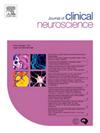Environmental risk factors of late-onset multiple sclerosis: A population-based case-control study
IF 1.9
4区 医学
Q3 CLINICAL NEUROLOGY
引用次数: 0
Abstract
Introduction
Late-onset multiple sclerosis (LOMS) was increasingly reported over the past two decades. Understanding the risk factors associated with LOMS can help improve early diagnosis, prevention strategies, and patients’ quality of life. This study aimed to assess various environmental risk factors in the patients with late-onset disease.
Methods
This study utilized a population-based case-control study design. Primary data on verified LOMS cases were received from Iran’s national MS registry, with additional information gained via telephone interviews. The potential risk factors for LOMS were examined using a questionnaire modified from global case-control studies. Age and sex-matched healthy controls were selected using face-to-face interviews. The collected data were analyzed using matched logistic regression in Stata software version 14, reporting adjusted odds ratios (OR), and 95 % confidence intervals, with a significance level set at p < 0.05.
Results
This study examined 82 LOMS cases and 207 matched controls. The mean age of cases and controls was 61 years. The findings revealed that moderate and high sunlight exposure during adolescence were related with 0.33 (95 % CI: 0.18–0.58) and 0.15 (95 % CI: 0.04–0.46) times decreased risks of developing LOMS, respectively. Similarly, compared to those with low sunlight exposure, participants with high and moderate sunlight exposure during adulthood had a lower chance of developing MS disease (OR = 0.35, 95 % CI: 0.18–0.69) and (OR = 0.40 95 % CI: 0.18–0.85) receptively. Moreover, age at first menstruation (p = 0.45), age at first delivery (p = 0.49), abortion history (p = 0.79), and oral contraceptive consumption (p = 0.18) did not significantly differ among the groups (all p > 0.05). The odds of developing LOMS were 2.47 (95 % CI: 1.05–5.81) times higher for 10 to 90 min of heavy physical activity per week and 2.39 (95 % CI: 1.08–5.27) times higher for over 90 min. Various emotional stress, including death of a loved one (OR = 2.19, 95 % CI: 1.07–4.48), family disruption (OR = 2.93 95 % CI: 1.62–1.02), homelessness (OR = 9.1 95 % CI: 1.4–57.5), employment dismissal (OR = 4.0, 95 % CI: 1.31–12.1), and unemployment (OR = 3.1, 95 % CI: 1.25–7.62), were significantly associated with an increased risk of developing LOMS. Depression (OR = 5.5, 95 % CI: 2.7–10.9), measles (OR = 2.63, 95 % CI: 1.4–4.8), and a family history of MS (OR = 4.7, 95 % CI: 1.4–15.6) were also associated with higher risk of LOMS development.
Conclusion
Sunlight exposure was shown to have a strong protective impact against LOMS. Furthermore, intensive physical activity, psychological stresses such as family upheavals, medical illnesses such as depression, and a positive family history of MS may all be associated with an increased risk of LOMS. These findings emphasized the importance of preventive measures for older individuals affected by the disease.
求助全文
约1分钟内获得全文
求助全文
来源期刊

Journal of Clinical Neuroscience
医学-临床神经学
CiteScore
4.50
自引率
0.00%
发文量
402
审稿时长
40 days
期刊介绍:
This International journal, Journal of Clinical Neuroscience, publishes articles on clinical neurosurgery and neurology and the related neurosciences such as neuro-pathology, neuro-radiology, neuro-ophthalmology and neuro-physiology.
The journal has a broad International perspective, and emphasises the advances occurring in Asia, the Pacific Rim region, Europe and North America. The Journal acts as a focus for publication of major clinical and laboratory research, as well as publishing solicited manuscripts on specific subjects from experts, case reports and other information of interest to clinicians working in the clinical neurosciences.
 求助内容:
求助内容: 应助结果提醒方式:
应助结果提醒方式:


